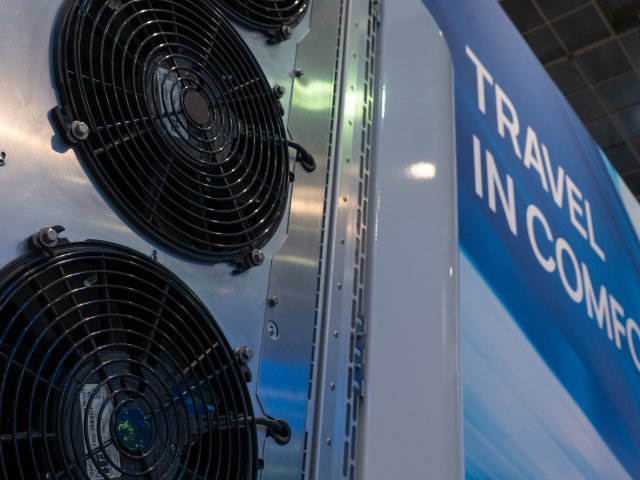
25th September 2019
Waiting for the green light: helping bus operators take the electric option
Bus
Electric is making its way in the public transport sector. But how do you provide heat and cooling when most systems rely on traditional combustion engines?
Well as Europe’s largest electric bus fleet (run by Connexxion, covering the Schiphol area in the Netherlands) has found out, there’s a new technology on the market that steps up to the task.
Power to the people
Around the world, increases in world population, shifting mobility patterns, and a greater focus on environmental issues are helping change the face of public transport. Yet when it comes to buses and coaches, there remain a number of constants:
- Whether over short or long distance, they remain one of the greenest forms of getting about
- Buses also offer the safest, most affordable, and user-friendly forms of transport open to most travellers
- They also improve accessibility and the ease by which people can go from A to B, thereby having a significant impact on their quality of life
The challenge of progress
But increasing the number of buses, trams, and trolleys alone does not provide a long-term solution if their emissions (both exhaust and noise) continue to affect urban life. Which explains why it’s estimated that half of all public buses will be electric by 2025.
However, with the expected introduction of so many electric bus fleets comes another question: how will the interiors be heated in the winter and cooled in the summer? Traditional HVAC (heating, ventilation, air-conditioning) units have typically drawn energy from a combustion engine – which is noticeable by its absence when things get electric.
So what can be done?
Large scale thinking
It was a question that figured highly in the minds of executives at the Dutch firm VDL Bus & Coach – especially after they’d received an order for 100 electric articulated buses.
The client, Connexxion, had plans to put into service Europe’s largest electric bus fleet – in the Amsterdam Airport Schiphol.
For VDL this was obviously a big job, but one they were happy to embrace. It helped that through their extensive partnership with Thermo King, they knew of a HVAC product that perfectly fitted their needs: the Athenia Mk II Electric Heat Pump.
Technology that can multi-task
Designed for both electric and hybrid buses, each Athenia Mk II offered VDL both air-conditioning and a heat pump in one highly efficient unit – thanks to a reversible refrigeration circuit:
- In heating mode, the unit transfers heat from outside air into the bus (talking science, it offers a coefficient of performance (COP) level of up to 4 – meaning that for each 1kW of electricity consumed from batteries, the pump generates 4kW of heat)
- In cooling mode, the Athenia Mk II operates as an electric air-conditioning unit
Cutting edge innovation
Returning to the Connexxion fleet, VDL has fitted two Athenia Mk II units per electric bus. As a result the operator has seen a significant reduction in greenhouse gas emissions – while still being able to guarantee full climate comfort for passengers.
“In times of rapidly expanding cities and increasing traffic congestion, the need for more sustainable passenger mobility technology is growing,” says Gulsah Metinoz, portfolio manager for Bus and Marine at Thermo King.
“This unique range of heat pump units strengthens Thermo King’s ability to provide customers with highly customized solutions to meet their business needs. It’s innovation that keeps us aligned to industry trends, while addressing key regulatory requirements.”
Take your bus fleet into a bright new future
For bus fleet managers investing in electric buses, or looking to update existing electric or hybrid vehicles, maybe it’s time to talk Athenia Mk II.
This is technology focused on maintaining passenger comfort come rain or shine, lowering emissions, and complying with the regulations of both today and tomorrow.



